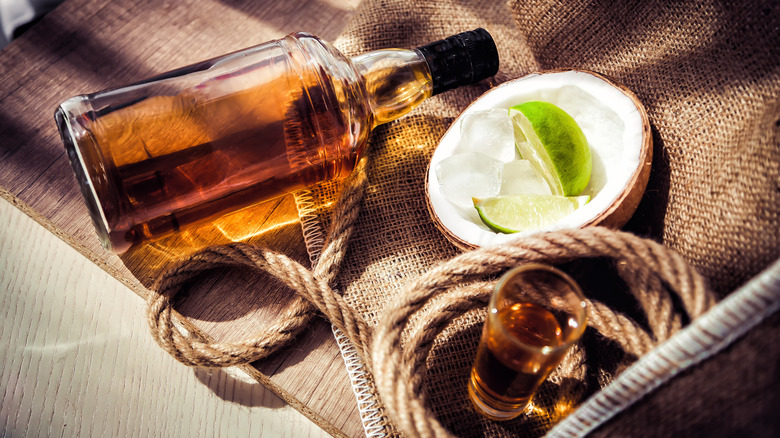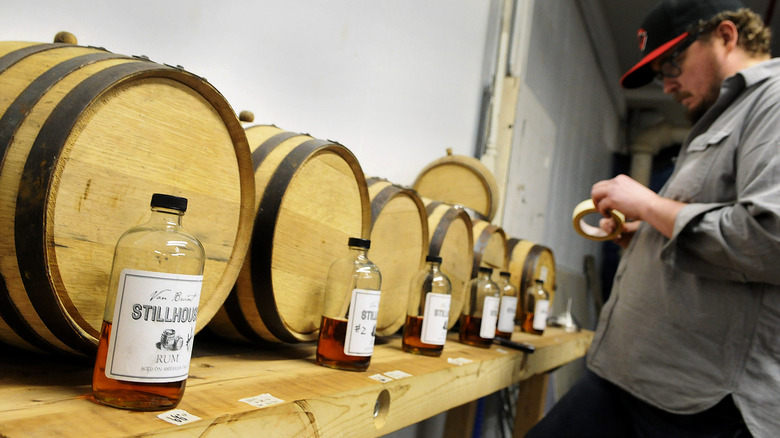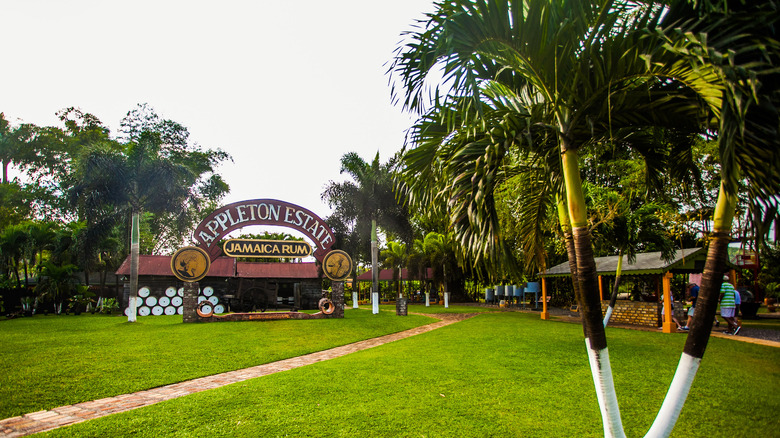Age Labels On Rum Aren't Always Reliable. Here's Why
We've all heard the saying that "age is just a number," implying that the number of years a person has lived doesn't necessarily impact life quality, integrity, or productivity. That may be true for humans, who have birth certificates of medical records clearly stating when they entered the world, but the concept doesn't always extend to inanimate objects — even ones we love, like alcoholic spirts.
Age is more nuanced when applied to alcohol production, especially for rum, which hails from at least 80 countries, per ABC Fine Wine & Spirits. Various laws and rules govern rum distilleries across the continents, some more lax than others. That includes labeling and how the age of a bottled rum has been determined. A 20-year rum from Jamaica and other sugar-cane-producing Caribbean islands may be vastly different from the same stated age in a South American rum, explains Liquor.com.
The reliability of age labels on rum basically comes down to approved production and labeling processes, which can be problematic with a specific method widely used in some countries.
The solera effect
Perhaps no other rum production method has more impact on bottle labeling than what's known as the solera effect, which originated in Spain, according to Liquor.com. This method allows rums of different ages to be blended and labeled according to an average number of years. By contrast, standard rum-making processes label the bottle according to the youngest rum in the blend.
The solera effect is a complex system but basically works by small portions of older rums remaining in a barrel, which get mixed with younger rums, then aged and mixed again and again over long periods of time. This potentially results in a printed label stating, for example, that a rum is 25 years old when varying portions of it were actually produced in more recent years.
Bevvy calls this process "fractional blending," noting that it's primarily used in South America. The term "solera" references the group of barrels holding the rum, which are typically stacked in rows of four. Marlo Gamora, a brand ambassador for Venezuelan rum Santa Teresa 1796, explained to Bevvy that the average age eventually assigned to a bottle increases the longer the blended rums have traveled from barrel to barrel.
Rules for making rum tend to be looser than those governing other spirits, according to Michelin Guide, particularly in Europe and the USA. An "anything goes" labeling mentality may exist with rum as opposed to whiskey — but that's not the only thing that enters the aging equation.
Aging gracefully is subjective
All rums come from sugarcane, reflected in the high number of rum brands hailing from sugar-cane-producing nations. But some brands use fermented sugar cane juice while others, such as many Caribbean rums, rely on sugarcane molasses, notes ABC Fine Wine & Spirits. The exception is French-speaking Caribbean islands that generally use the juice.
Flavor, color, intensity, aroma, and overall characteristics can vary widely from one distillery to the next, as does alcohol by volume (ABV), which runs from 20% all the way up to 75.5%. But the U.S. Government does dictate some standards in order to be classified as rum, such as 190-proof production and 80-proof bottling.
Though it's tempting to rely solely on a rum's age as an indicator of quality, it's more complex than that. As Liquor.com points out, young rums can have the same rich and balanced characteristics as older ones based on myriad factors, including climate, the type of barrels, and whether it's made from cane juice or molasses. And, of course, the production method impacts the number of years required and how it's labeled.
If you want to know the precise age of that bottle of rum you're taking home, check out ones from countries with strict labeling practices. These include Jamaica, Barbados, and Puerto Rico, home to some of the world's most famous rums. Protocols on these islands adhere to traditional labeling of blended spirits in which the age of the youngest rum is what lands on the bottle.


